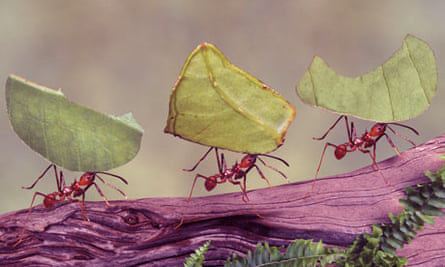The discovery was recently documented in Nature Communications. In a new study, researchers at the University of Wisconsin-Madison describe how worker ants interact with a biomineralized exoskeleton. cephalotes soldiers were more likely to survive encounters with ants. It appears that the biomineral body develops as the armor turns into ants and eventually covers the whole body, adding an extra layer of protection to its exoskeleton.
The authors of the study wrote, “Large enough and strong. In direct combat with cephalotes military personnel, ants with biomineralized cuticles lost significantly less body parts and had a significantly higher survival rate than biomineral free ants,” the study authors wrote.
In the Latin American ant-eating ant’s world, scientists have found the first known example of biominical body armor in the case of a species of insect.
Armor, a super-hard material made from magnesium-rich calcite crystals, is found in the exoskeleton, a native Acromyrmex echinatior of various regions of Latin America, a member of the leaf-cutting ant species. The armor does not help prevent the invasion of Atta cephalotes, another large ant species; it also seems to protect leaf-cutting disease from pathogenic fungi.
Multiple experiments have also shown that the risk of infection with anthrax fungi, Metarhizium anisopliae, with biomineralized exoskeleton is much lower than that of insect exoskeleton.
This type of armor is known to exist in crustaceans such as lobster hard exoskeletons but it has never been seen before in insects. The body armor components found in ants also differ significantly from those of their crustacean cousins.
Crustaceans with magnesium-rich calcite-based body armor are extremely rare. The study said that as a result of changes in the Earth’s oceans about 550 million years ago, it has seen a significantly lower ratio of magnesium to calcium.
Even outside of their body armor, leaf-cutting ants are interesting animals. These are relatively rare examples of fungus-cultivating ants, which actively cultivate fungi in the same way that humans cultivate crops. However, the fungus grown by ant farmers is never found in the wild, so modified by ants that they are unable to live independently.
Ants seemed to have developed this ability 20 to 30 million years ago, 10,000 – 12,000 years ago humans were considered merely agricultural improvements pretty.















